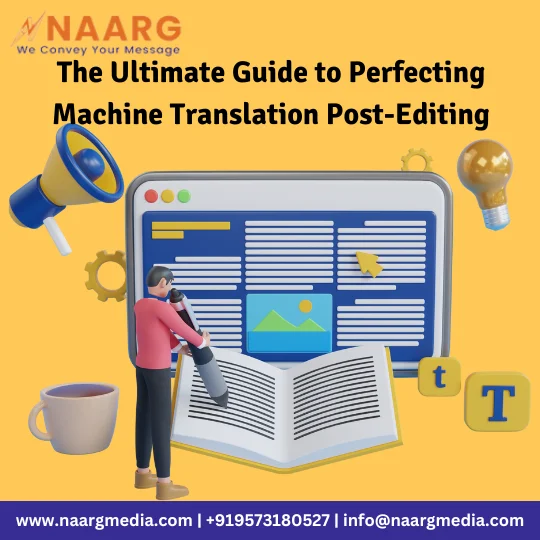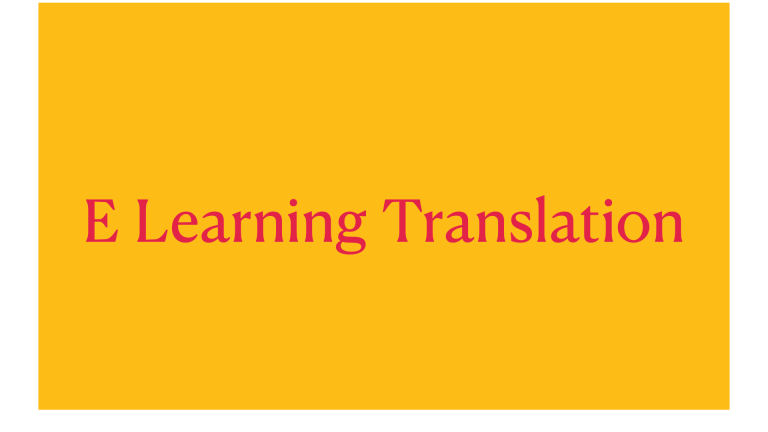In recent times, machine translation has emerged as a pivotal solution for translation services. And machine translation is here to stay. However, are you familiar with machine translation post-editing? It is now considered a critical phase in the translation process. Harnessing the power of artificial intelligence to break down language barriers and facilitate seamless cross-cultural understanding.
But, as we all know, MT isn’t perfect. Because the inherent complexities of language pose unique challenges that can only be tackled by professional translators. Still, machine translation can be considered one of the most significant technologies used to expedite content localization.
Did you know that, according to a new report by Grand View Research, the global machine translation market is expected to reach USD 2,719 million by 2030? Expanding at a CAGR of 13.5% from 2023 to 2030. That is the level of impact machine translation is going to have in the coming future.
In this blog post, we will explore the importance of machine translation post-editing, best practices in machine translation post-editing. Significance of modern translation services and benefits machine translation post editing.
So, let’s dive in.

Significance of Modern Translation Services
In this digital landscape, the significance of modern translation services cannot be overstated. As our world becomes increasingly interconnected, businesses are engaging in global interactions that transcend linguistic boundaries. As we all know, translation services play a crucial role in facilitating effective communication and fostering international collaboration.
Many prominent brands have recognized the importance of efficient and accurate translation services to maintain a strong global presence. One example is Airbnb, an online marketplace for lodging and travel experiences. They utilized translation services to enable hosts and guests to communicate effectively despite language differences. All these examples underscore the vital role and importance of modern translation services in fostering cross-cultural communication.
Modern translation services also leverage advanced technologies, like machine learning and artificial intelligence, to enhance accuracy and efficiency. These modern translation services not only bridge language gaps but also contribute to breaking down barriers, enabling a more inclusive and interconnected global community.
Also, in fields like business, healthcare, and diplomacy, the ability to communicate seamlessly across various languages is crucial. Hence, modern translation services are indispensable tools in today’s digital world.
Importance of Post-Editing in Machine Translation
If we talk about post-editing in the realm of machine translation, it has become one of the most essential steps. Also, emphasizes the importance of human intervention to enhance and refine the output generated by machine translation engines. While you may have seen that machine translation has made significant strides in the translation industry, it often requires fine-tuning to achieve linguistic accuracy.
Post-editing also involves skilled human linguists who review and revise the machine-generated translations. It not only enhances the overall quality of your translations but also addresses potential errors or misinterpretations that automated systems may overlook. A collaborative synergy is required between human expertise and machine algorithms for post-editing, as it exemplifies a balanced approach.
Harnessing the efficiency of MT output while preserving the nuanced intricacies that only professional translators can discern. So, as a result, post-editing stands as a pivotal practice in refining the MT outputs of machine translation. Machine translation post-editing has become a valuable tool for businesses seeking both speed and linguistic precision in their endeavors.
Benefits of Post-Editing
When we talk about post-editing in the context of machine translation, it offers several significant benefits that contribute to the overall improvement of your translated content. Listed below are some of the benefits of post-editing.
1. Quality Enhancement
Post-editing allows professional translators to review and refine machine-generated translations, ensuring clarity, accuracy, and coherence. It helps to elevate the overall quality of your translated document, making it more suitable for its intended purpose.
2. Subject Matter Expertise
There are specific industries or technical domains that require specialized knowledge. Human post-editors with expertise in certain fields ensure that your translated content accurately reflects the terminology and nuances relevant to that industry.
3. Efficiency Gains
Machine translation speeds up the initial translation process while post-editing often takes less time than translating content. It results in a more time-efficient and cost-effective workflow. Making it an attractive option for translation projects that require a quick turnaround time without compromising quality.
All in all, post-editing is a valuable step that combines the strengths of human linguistic experience and automated translation systems. Ensuring the final output meets the highest standards of accuracy and relevance.
Best Practices in Machine Translation Post-Editing
MTPE is a specialized task that requires best practices to ensure high-quality and efficient results. Listed below are some best practices for effective machine translation post-editing.
1. Understanding the source text
Always begin by thoroughly understanding the source text. Familiarity with the source text helps the post-editor capture the intended meaning, context, and tone, allowing for more accurate adjustments.
2. Target Audience Consideration
Make sure to keep the target audience in mind during your post-editing process. And then adjust the translation to resonate with the cultural, linguistic, and contextual preferences of your target audience. It enhances the overall effectiveness of communication.
3. Collaboration with Professional Translators
Try to establish a collaborative relationship between the machine translation system and professional translators. This collaboration will allow continuous feedback loops, improving the machine translation system over time.
4. Review and Iterative Process
As you know, post-editing is an iterative process. So, after the initial edit, always review the content for any remaining issues and refine it as needed. This iterative improvement helps fine-tune the output for optimal quality.
By incorporating all these best practices, machine translation post-editors can easily optimize their workflow, ensuring that the final translated content meets the highest standard of accuracy and readability.
Are you ready to make your translation projects more cost-effective with translation technology? We at Naarg are ready to help you with your translation project. For more queries, reach us at info@naargmedia.com to learn more about our services.

